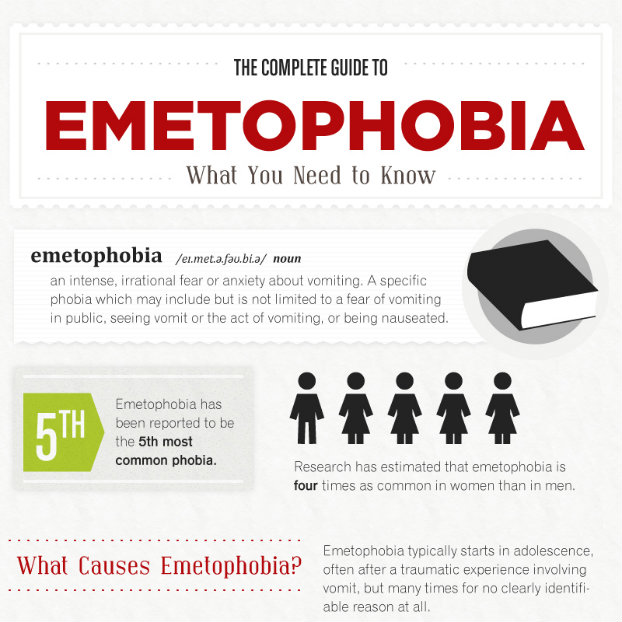 A child with Emetophobia may feel lost and overly anxious. Parents may also be uncertain about how best to help their child. They want their child to be able to live a healthy, happy life.
A child with Emetophobia may feel lost and overly anxious. Parents may also be uncertain about how best to help their child. They want their child to be able to live a healthy, happy life.
For an 11-year-old boy with Emetophobia and anxiety, the intense fear developed after an incident in which he saw another child become violently ill.
As he grew older, his acquired phobia prevented him from engaging in a number of activities with his peers. For instance, he refused to play sports or stay at summer camp because of the possibility that he might see someone vomit. The boy even started to avoid others at lunch time because he was so worried his classmates might become sick while he was sitting with them.
This fear of social situations and crowds is commonly found in emetophobics who dread the idea that someone might vomit in their presence. In adults and in children, the social consequences of Emetophobia can be serious.
The child in the study was intelligent, but he was often distracted in school by the worry that someone might vomit in class. Like many emetophobics, the child feared the word “vomit” and other terms associated with it.
Before the study, the boy was given medication for depression and anxiety, but it did not seem to help in his particular case. Exposure therapy and cognitive-behavioral therapy were prescribed. The former involved making the child less anxious in situations related to vomit; the latter focused on changing the way he thought so he would no longer be overcome by recurrent worries about vomit.
During treatment, the boy was visibly upset when exposed to situations which made him uncomfortable and anxious. There were times when he cried or tried to stop the sessions, but his parents did not allow him to quit. The longer the child had to be in the fearful situation, the more his anxiety decreased. This is how exposure therapy works: by systematically de-sensitizing the phobic to his or her fear. The therapist teaches the anxious person that the source of fear does not need to interfere with life. People with anxiety disorders often blow their worries out of proportion, as the child did with his fear of vomit.
To treat harmful, irrational thought processes which lead to chronic worry, the therapists used cognitive restructuring. Cognitive restructuring allowed the child in the study to replace his former negative thoughts with more rational ones. Before, he would immediately assume the worst in a situation (i.e., that someone was going to vomit) with little to no evidence. After treatment, he understood that his way of thinking was causing him to experience unwarranted fear and stress.
Six months after being treated, the child was still showing marked improvement and was no longer taking medication for Emetophobia.
Helping Your Own Child with Emetophobia
Parents of a young emetophobic should look in to treatment options. Exposure therapy and cognitive-behavioral techniques (like restructuring) may be the key to improving your child’s condition.





